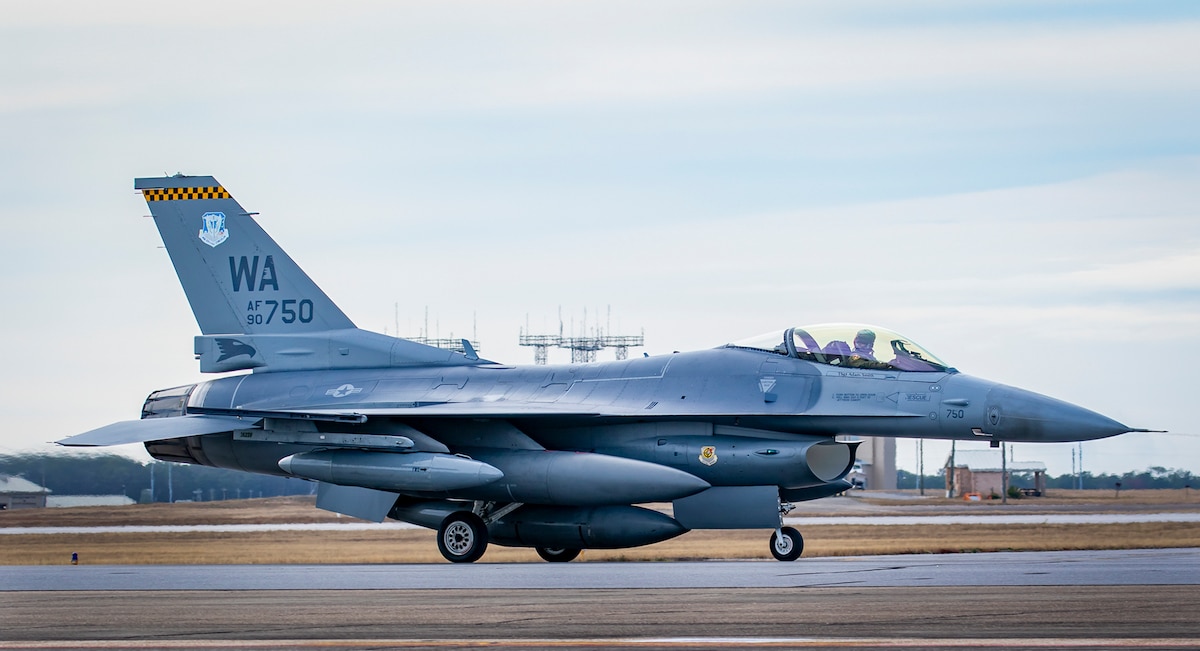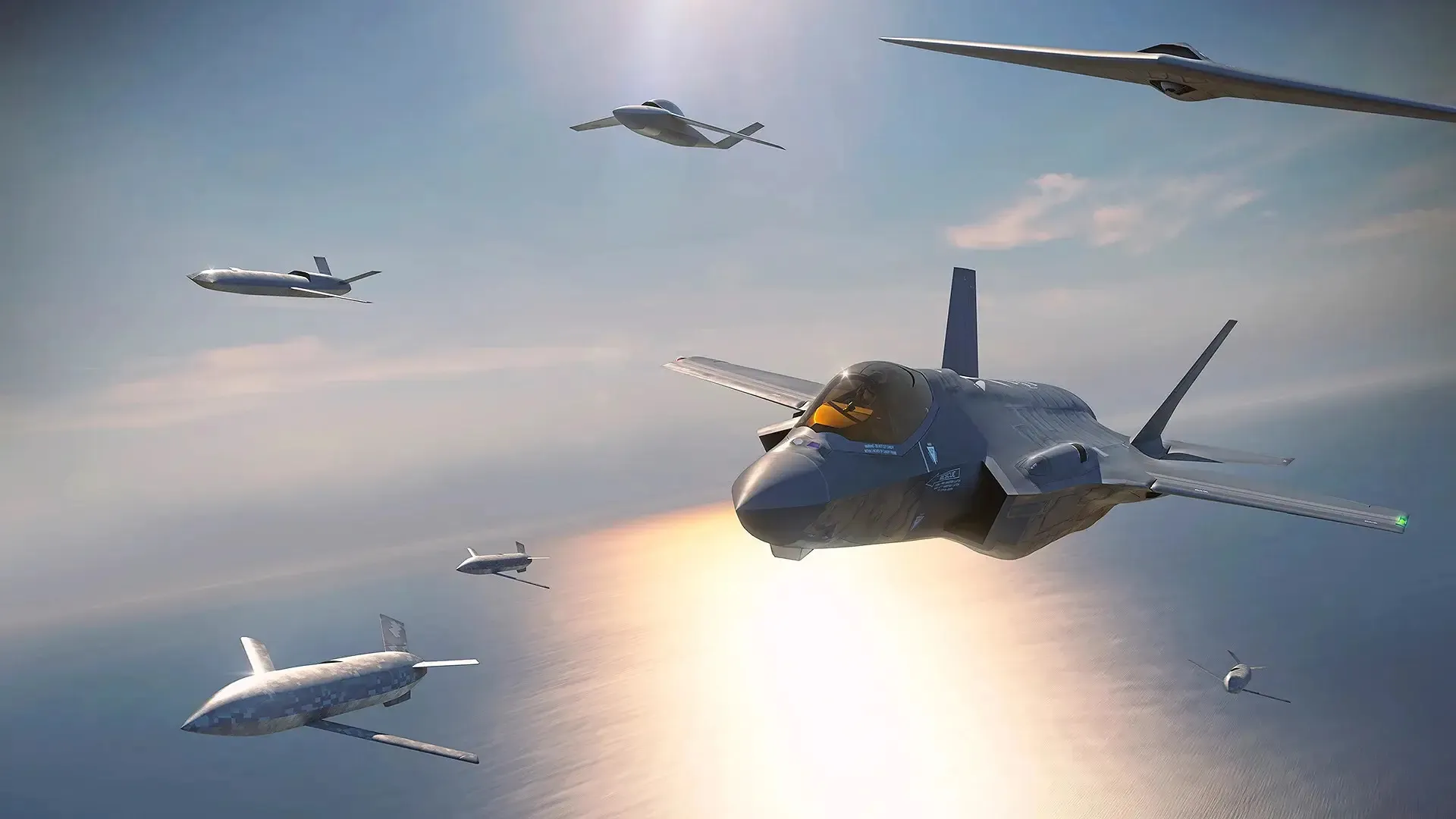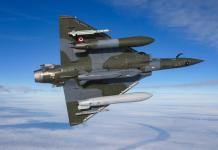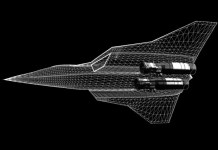In a significant move that could change the future of aerial combat, the US Air Force (USAF) will begin modifying three Lockheed Martin F-16 fighters for autonomous flight capabilities.
Three USAF F-16 fighter jets arrived recently at Eglin Air Force Base’s flight test facilities for alterations under the Viper Experimentation and Next-generation Operations Model – Autonomy Flying Testbed (VENOM-AFT) program.
Located in the western Florida panhandle, Eglin AFB serves as a hub for testing squadrons and a proving ground for AI experimentation. In a statement, the USAF confirmed the arrival of three F-16s on April 3, designated for rapid assessment of autonomous flight technologies.
Major Ross Elder, developmental test lead for the VENOM-AFT program, expressed the significance of this mission, labeling it as a “pivotal chapter” in the evolution of aerial combat capabilities.
“The VENOM program marks a pivotal chapter in the advancement of aerial combat capabilities. This transformative program holds the potential to redefine air combat paradigms by fostering novel autonomous functions for current and future crewed and uncrewed platforms,” said Maj. Elder.

The service said that VENOM-AFT, designed and funded for expediting autonomy software testing on both crewed and uncrewed aircraft, complemented the ongoing autonomy data and AI experimentation efforts at Eglin Air Force Base.
Under the VENOM-AFT initiative, six F-16s are slated for conversion. The program, unveiled last year, received nearly $50 million in the fiscal 2024 budget. In the subsequent fiscal year, the service is seeking just under $17 million for continued development.
Further, the VENOM program aims to accelerate the development of Collaborative Combat Aircraft (CCA), which will seamlessly integrate unmanned drones with manned platforms.
Lt. Col. Joe Gagnon, commander of the 85th Test and Evaluation Squadron within the 53rd Wing at Eglin, emphasized the critical need for swift tactical autonomy development to accelerate the deployment of CCA. He stressed the importance of achieving “speed-to-ramp” to advance autonomously enabled combat capabilities swiftly and safely.
Following modification, the VENOM F-16s will undergo developmental and operational testing at Eglin Air Force Base as part of a collaborative effort led by the 96th Test Wing and 53rd Wing.
Throughout these tests, pilots will remain in the cockpit to oversee autonomy functions, while operators will offer feedback during modeling, simulation, and post-flight phases to developers, ensuring flight objectives are achieved both before and during flight. Gagnon emphasized that “there will never be a time these VENOM aircraft will solely fly by itself” without someone present.
Why Is USAF Focusing On Unmanned Aerial Platforms?
This VENOM initiative follows in the footsteps of previous endeavors such as the Skyborg project, which focused on developing aircraft-agnostic autonomous flight software, and the X-62 VISTA (Variable In-flight Simulator Aircraft) program, which utilized modified F-16s to explore the maneuvering and tactics of autonomous aircraft.
CCAs are set to play a pivotal role in the US Air Force’s Next Generation Air Dominance “family of systems” centered around a manned fighter. With a planned substantial increase in investment, totaling $28.48 billion for fiscal years 2025-29, the US Air Force aims to integrate next-generation drones as potent additions to its fighter aircraft fleet.
These drones are envisioned to serve as highly capable robotic wingmen, augmenting human pilots in combat scenarios. The objective is to leverage artificial intelligence alongside advanced sensors to detect and assess potential threats from adversaries, awaiting human approval before engaging.
These unmanned systems are also anticipated to act as force multipliers, enhancing sensor capabilities and weapon deployment in contested areas while bolstering the effectiveness and survivability of crewed stealth aircraft.
Military strategists are deeply concerned about the prospect of full-scale conflicts, especially in scenarios involving Chinese aggression, such as a potential invasion of Taiwan. China’s substantial deployment of powerful missiles along its coastline and in the South China Sea presents formidable challenges to conventional US Air Force assets.

These defensive measures have the potential to diminish the effectiveness of traditional airpower and escalate the risk of casualties in any confrontation. In the face of such threats, the US Air Force recognizes the need for agile, adaptable, and cost-effective solutions to maintain air superiority.
The collaborative combat aircraft program presents a promising solution, often referred to as “affordable mass.” The Air Force intends to produce 1,000 to 2,000 of these AI-driven drones at a fraction of the cost of advanced fighters like the F-35.
These robotic aircraft will encompass various specialized roles, including assault swarms, observation, resupply missions, and serving as loyal wingmen to human pilots, demonstrating a shift towards leveraging autonomous systems for enhanced operational capabilities.
- Contact the author at ashishmichel(at)gmail.com
- Follow EurAsian Times on Google News




